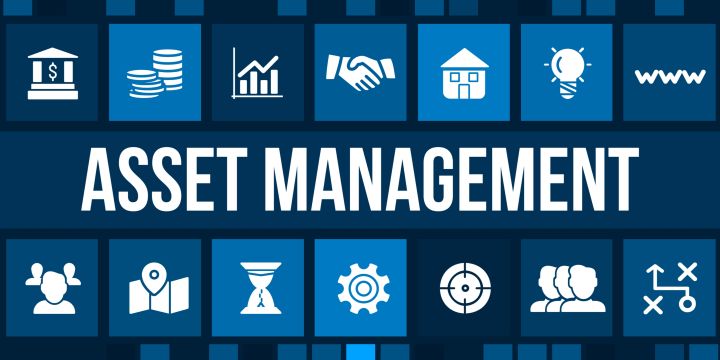Table of Contents
- Introduction to Asset Management
- Key Components of Asset Management
- Strategies for Effective Asset Management
- The Role of Technology in Asset Management
- Asset Management Regulations and Compliance
- Common Challenges and Solutions in Asset Management
- Predictions for the Future of Asset Management
- Conclusion: Making Informed Asset Management Decisions
Introduction to Asset Management
In the ever-evolving world of finance, asset management stands as a cornerstone, crucial for optimizing the financial strategies of both individuals and institutions. Asset management involves strategically handling various investments, such as stocks, bonds, and real estate, all orchestrated to achieve specific financial objectives. Through careful management of these assets, investors can maneuver through the intricacies of the market and attain their goals while successfully minimizing related risks.
Asset management is significant not only because it can grow wealth but also because it can preserve it over time. This facet requires an astute understanding of market dynamics, economic trends, and investment principles, all tailored to meet each investor’s unique objectives and risk tolerance. From identifying promising investment opportunities to monitoring market conditions, asset management demands a comprehensive approach to ensure a balanced and profitable portfolio.
Key Components of Asset Management
Effective asset management is built on several fundamental components, each pivotal in achieving financial stability and growth. At the forefront is portfolio management, where asset managers curate and maintain a diversified portfolio tailored to the investor’s goals. This includes regularly reviewing the portfolio’s performance and adjusting to optimize returns.
Risk assessment is another critical component involving identifying and mitigating potential financial threats. Through thorough analysis and strategic planning, risk assessment helps safeguard assets against market volatility and economic downturns. A well-articulated communication strategy between asset managers and clients also remains vital, facilitating transparency, trust, and alignment of investment strategies with the client’s expectations.
Strategies for Effective Asset Management
Various strategies can be employed in asset management, each designed to maximize investment returns under different market conditions. One such approach is active management, where asset managers actively select securities to outperform an index or benchmark. This strategy requires continuous analysis and timely decision-making to capitalize on market opportunities.
On the other hand, passive management employs a long-term strategy aimed at mirroring the performance of a designated index. This method prioritizes cost minimization and seeks to mitigate the effects of market fluctuations on investments. A growing trend in asset management is the utilization of algorithms and advanced analytics, which enable asset managers to make data-driven decisions, identify investment patterns, and enhance portfolio performance.
The Role of Technology in Asset Management
Technology has become integral to asset management, transforming traditional processes and offering new portfolio management methods. Advances in artificial intelligence (AI) and blockchain technology have revolutionized the industry, providing innovative solutions that enhance asset management efficiency and accuracy.
Digital platforms have democratized access to asset management services, enabling investors to manage their portfolios online and in real time. This shift has empowered individual investors and facilitated faster and more informed decision-making processes. As technology continues to evolve, it is expected to streamline operations further and unlock new investment opportunities.
Asset Management Regulations and Compliance
Asset management is heavily regulated to maintain fairness and protect investors’ interests. These regulations ensure transparency, accountability, and integrity, fostering trust between investors and asset managers. Compliance with regulatory standards is essential, as it minimizes risks associated with legal and ethical breaches.
Regulatory bodies oversee and enforce these standards, which are vital in maintaining market stability and investor confidence. As the industry grows and new challenges emerge, regulations continue to adapt, addressing cybersecurity, ethical investing, and environmental considerations.
Common Challenges and Solutions in Asset Management
Asset management grapples with challenges primarily driven by market fluctuations’ unpredictable nature and regulations’ ever-shifting landscape. Dynamic factors can significantly impact investment results, underscoring the critical necessity for innovative strategies to navigate and reduce potential risks effectively.
Embracing a flexible approach to asset management, which involves proactive portfolio adjustments and robust risk management frameworks, equips professionals to confront these obstacles head-on. By maintaining a keen awareness of emerging market trends and regulatory developments, asset managers can craft insightful strategies that bolster performance and foster resilience, allowing them to thrive amid the uncertainties of the financial world.
Predictions for the Future of Asset Management
The asset management landscape is on the brink of a transformative evolution fueled by rapid technological advancements and a shift in investors’ priorities. One of the most striking trends emerging from this shift is the growing appetite for sustainable and ethical investments, showcasing an eagerness to intertwine financial aspirations with deeply held personal values. Investors are increasingly seeking opportunities that allow them to impact society while pursuing their financial goals positively.
As asset managers navigate these evolving waters, embracing innovative strategies and remaining adaptable becomes paramount. Flexibility is essential in tackling the intricate challenges presented by the global financial market. By fostering a culture of responsiveness and creativity, asset managers can ensure that their services endure and thrive, adeptly meeting their clients’ dynamic needs while championing a more sustainable future.
Conclusion: Making Informed Asset Management Decisions
In conclusion, navigating the world of asset management requires a holistic approach that artfully weaves together strategic foresight, cutting-edge technology, and strict adherence to regulatory standards. By immersing themselves in the intricate tapestry of asset management, investors can make well-informed decisions, fine-tune their portfolios, and ultimately realize their financial aspirations.
The journey doesn’t end there; continuous learning and a willingness to adapt are essential for flourishing in asset management’s fast-paced and ever-evolving realm. Embracing change fosters substantial growth and cultivates a foundation of sustainability that benefits investors and asset managers alike.







